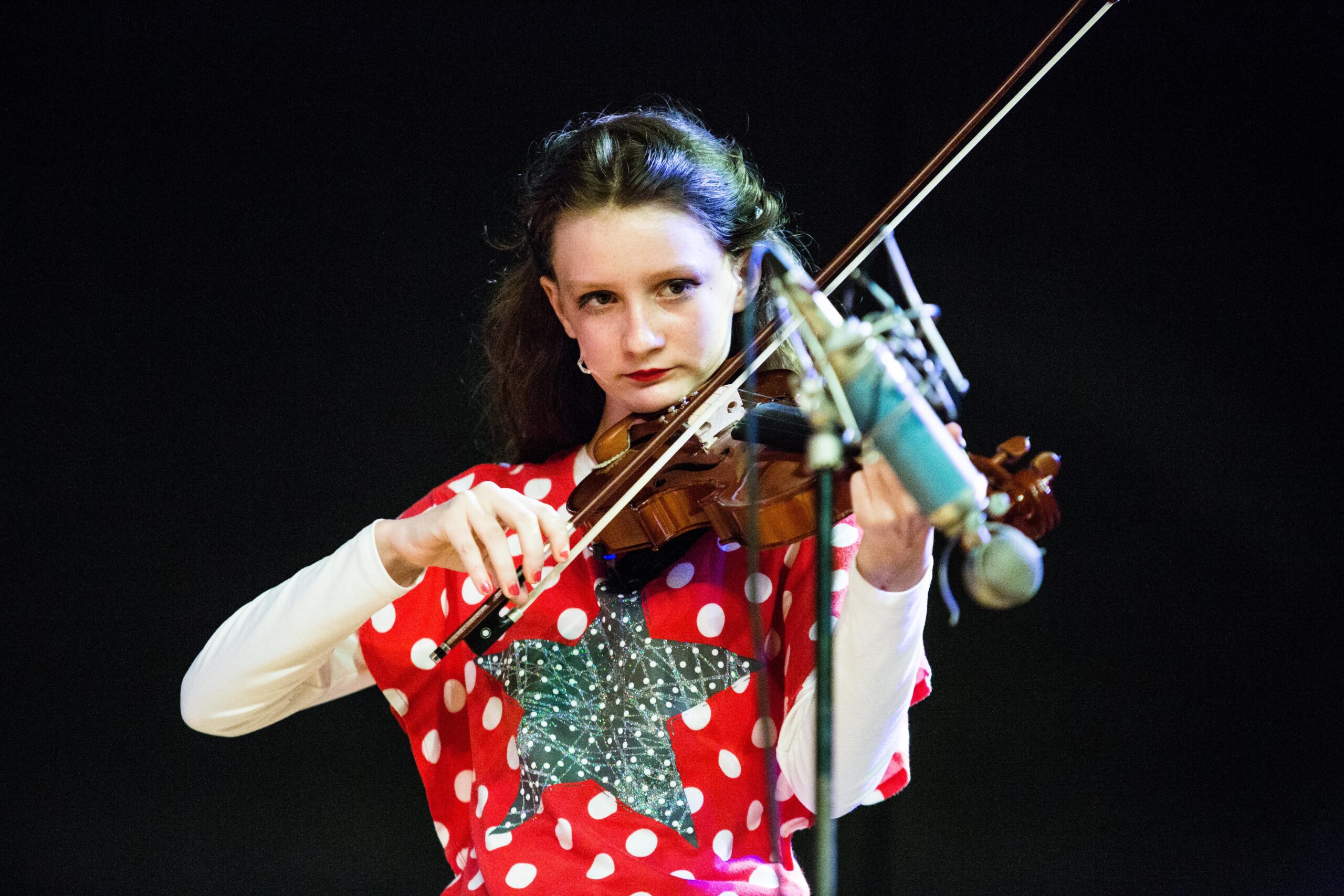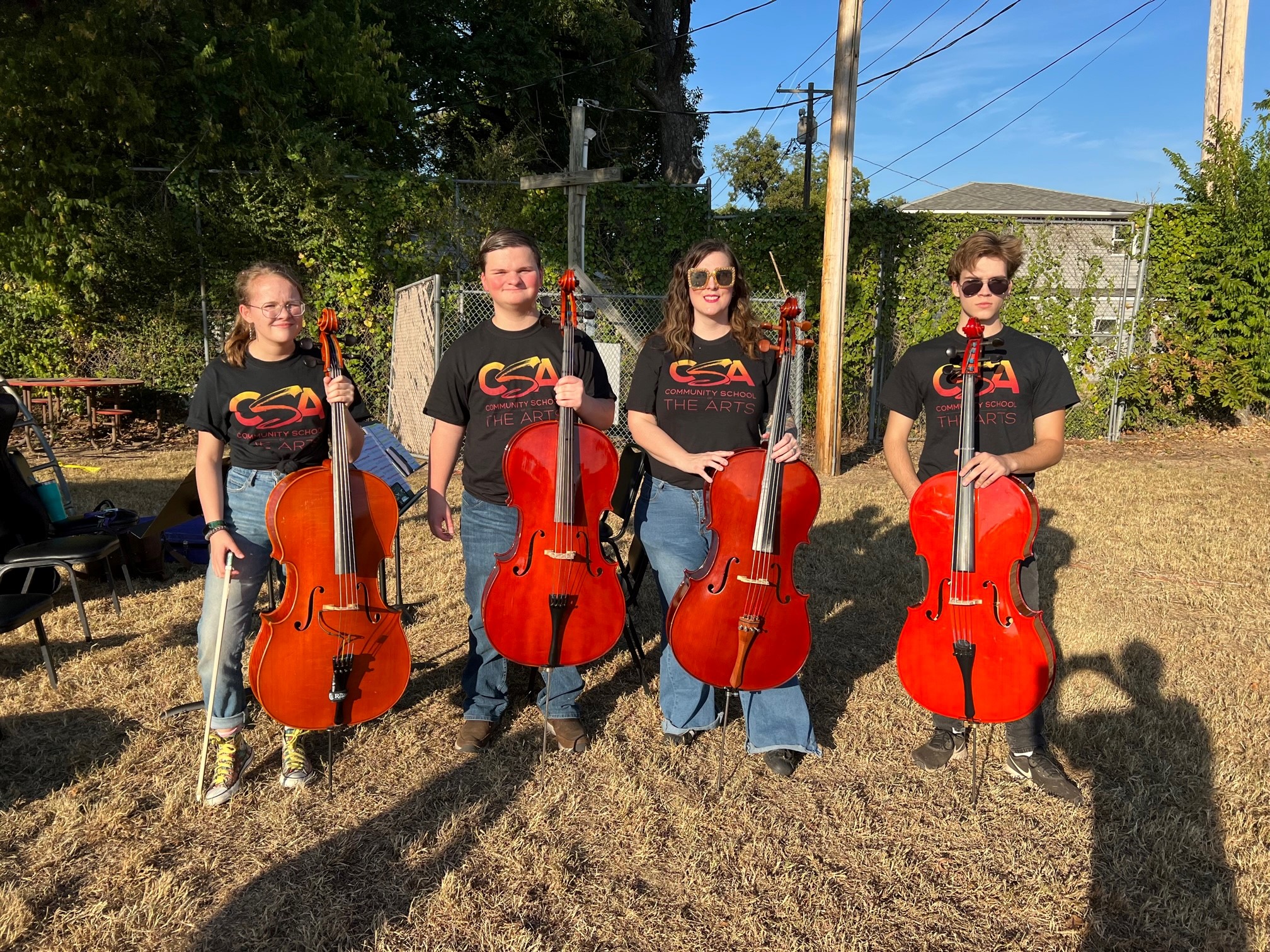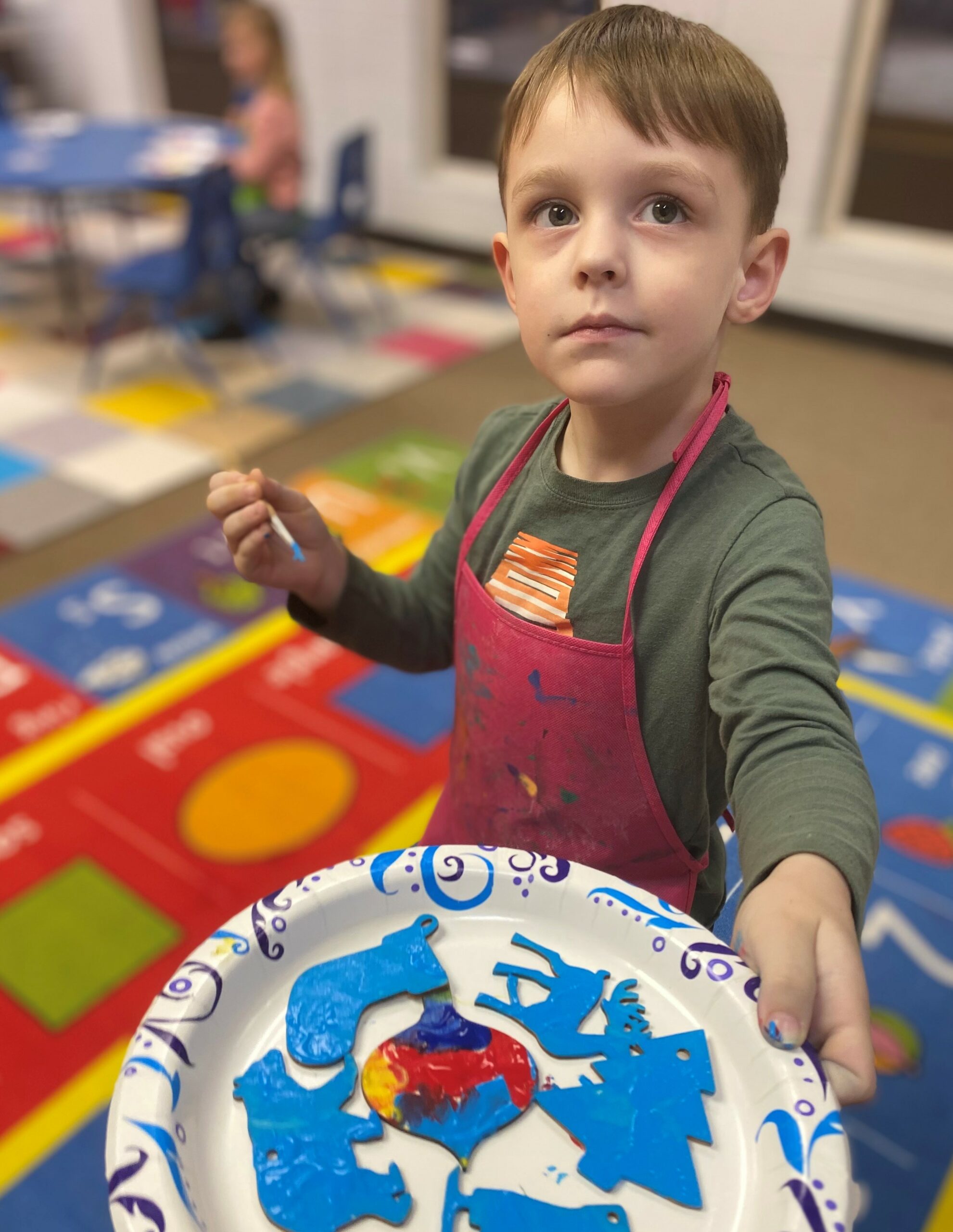There’s a palpable artistic energy coursing through Fort Smith these days. The city has developed a thriving arts scene across all disciplines, from public art and community music festivals to productions and exhibits on stages and galleries, large and small.
Less visible but no less vital is the mission of one nonprofit working to help produce the next generation of art careerists. Community School of the Arts, founded in 2006 at the University of Arkansas-Fort Smith and established as a nonprofit in 2016, provides kids and young people unique opportunities to gain early exposure to art forms, nurture those interested in art careers, and foster lifelong creative expression.
“We’re an arts education organization, and the philosophy behind our program is very much like athletics,” says Dr. Rosilee Russell, founder, and executive director. “That is, to start a child as young as we can in the arts and train them and keep them all the way from preschool age through high school. Our goal is to prepare them to either go on to college in the arts, or to do what they want to do with their artistic talent.”
Given the response to and growth of Community School of the Arts programming, this mission has struck a nerve with parents and school administrators alike. Participation has grown tenfold since the organization was established, today reaching more than one thousand local students across all grade levels.
“Prior to COVID, we had off-site programs where we would go to underserved, underreached schools and service those kids after school,” Rosilee says. “We now have an after-school program, recently named for Arkansas’ former First Lady Susan Hutchinson, and it services all of these kids, from young children all the way through high school.”
Introducing art curriculum to kids is more than just a way to liven up the day; it also pays substantial dividends in children’s development. According to multiple sources, the arts play a key role in performance in school, developing children’s critical thinking and problem-solving skills as well as providing an outlet for self-expression that may otherwise be difficult for them.
What’s more, evidence abounds as to the positive outcomes that accompany an exposure to the arts throughout one’s childhood and adolescence. A ten-year national study by Stanford University found students involved with impactful non-school arts programs were four times more likely to win an academic award and did better on college entrance exams than those who didn’t. Community service, interest in STEM curriculum and school attendance were all likewise positively affected by kids participating in art programs.
Despite these documented outcomes, arts curriculums have come under steady budgetary assault in recent years, severely curtailing or eliminating such programs altogether from the school day in the name of cost cutting. While not exclusively a problem at home – a 2021 proposal in England to cut art funding to schools and public universities in half being a notable recent example – it is an issue with which many school districts in the U.S. continue to struggle.




Into this void step organizations to shore up artistic opportunity, providing cash-strapped schools with art supplies, giving art lessons directly to students and other programs that help turn kids on to various art forms. And in the case of Community School of the Arts, this exposure cuts a very wide swath of ages and backgrounds in order to help kids discover and develop their own artistic interests.
“This past fall, we started the first ever Arkansas arts-based preschool called the Preschool for the Creative Arts,” Rosilee says. “That’s for ages three, four and five, and they literally do everything through the arts – music, theater, dance, visual arts. All their curriculum is arts-based, and it is going extremely well.
“It’s not simply combining arts into a curriculum; the curriculum centers around the arts and those children are learning at a faster rate than a child would in a traditional preschool.”
On the heels of that successful program, Community School of the Arts is currently bringing to life an equally ambitious program called the Institute for the Creative Arts. The Institute, the first in the state, targets high school students entering grades nine through twelve, providing them with school credit for half-day study in various classes that develop students’ talent and interests and expose them to careers in their chosen field of expression.
“We’re also building a new facility, the Center for the Creative Arts, on our river front,” Rosilee says. The organization currently operates out of the former St. Boniface School in Fort Smith.
“It’s a 40,000-square-foot facility housing all our arts programs. We’re looking at housing, eventually, five hundred high school students daily in our program. We hope to start next fall with two hundred. We have thirty-nine school districts that can participate, not counting private schools, home school and online students. And we’re crossing the border into Oklahoma, as there are Oklahoma districts that wish to come over here and participate.
The success of the organization is personally gratifying for Rosilee, who completed twenty-six years at the University of Arkansas-Fort Smith as a professor there and as a touring concert pianist. Given her background, she thoroughly understands what her students are looking for and leads with that in mind.
“What we’re creating is a conservatory model where you come here and you eat, live, and breathe the arts during your school day. It’s a lot of work, but it is very rewarding,” she says. “Kids in the arts want to be together. They want to hang out with each other, and they understand each other. Our center is going to be a place where they can do that.”
For more information about the programs and classes offered at the Community School of the Arts, visit them online at csafortsmith.org, or call 479.434.2020




